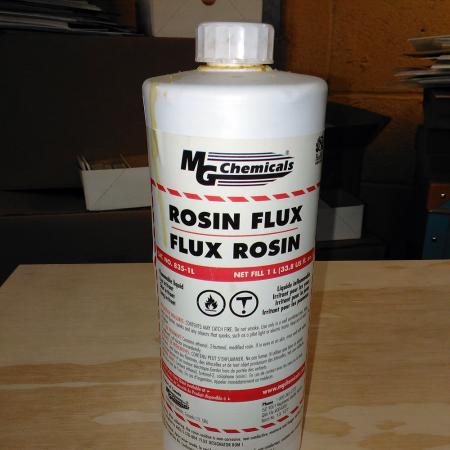

Different metals have different oxidation levels and require different types of flux to ensure a strong bond. The first is the type of metal you will be soldering. When choosing the right rosin-based flux for your soldering needs, there are a few key factors to consider. Whether soldering delicate electronic components or large plumbing pipes, rosin-based flux can provide excellent cleaning and residue-free properties to ensure a strong, reliable bond. It can be used in various soldering applications, including electronics, plumbing, and jewelry. This is especially important when working with delicate and intricate components, as it helps to ensure that the solder is evenly distributed and does not damage the components during the soldering process.Īnother advantage of rosin-based flux is its versatility. Rosin-based flux helps the solder to flow more easily and evenly over the metal surface, resulting in a stronger, more reliable bond. One of the key advantages of using rosin-based flux is its ability to improve the flow and wetting properties of the solder. This can cause problems such as short circuits, decreased conductivity, and reduced heat transfer.

However, acid-based flux is also highly corrosive and can leave a residue that is difficult to remove.

Acid-based flux is known for its strong cleaning properties and is effective at removing surface oxides and preventing further oxidation during the soldering process. This type of flux is commonly used in plumbing and automotive applications, where the soldered joints are exposed to harsh environments. Acid-based flux is made from a mixture of acids and activators. Rosin-based flux, on the other hand, does not corrode the metal parts or the solder, making it an ideal choice for delicate and sensitive electronics.Īnother popular type of soldering flux is acid-based flux. This is important because corrosive flux can cause damage to the metal parts being soldered and contaminate the solder, making it difficult to use for future soldering projects. In addition to its cleaning and residue-free properties, rosin-based flux is also non-corrosive. The low melting point of rosin-based flux also helps prevent damage to the soldered components.

On the other hand, Rosin-based flux is easy to remove after soldering, as it can be wiped away with a clean cloth or brushed off with a brush. Residue can cause problems such as short circuits, decreased conductivity, and reduced heat transfer. The rosin component in rosin-based flux provides excellent cleaning properties, making it ideal for removing surface oxides and preventing further oxidation during the soldering process.Īnother reason rosin-based flux is considered the best is that it does not leave any residue after soldering. The rosin is mixed with other ingredients, such as alcohol or activators, to create a soldering flux. Rosin-based flux is made from rosin, a natural resin extracted from pine trees. This type of flux is considered the best because it is non-corrosive, does not leave residue, and has a low melting point. The best soldering flux is rosin-based flux. In this article, we will discuss what the best soldering flux is and why it is better than others. The right choice of soldering flux can greatly improve the quality and reliability of the soldered joint. A crucial component of soldering is soldering flux, a chemical compound used to remove surface oxides and prevent oxidation of the metals being soldered. This process is commonly used in electronics, plumbing, and jewelry making. Soldering is a process used to combine two or more metal parts by melting a filler metal with a lower melting point than the base metal and then solidifying the filler metal to create a permanent bond.


 0 kommentar(er)
0 kommentar(er)
